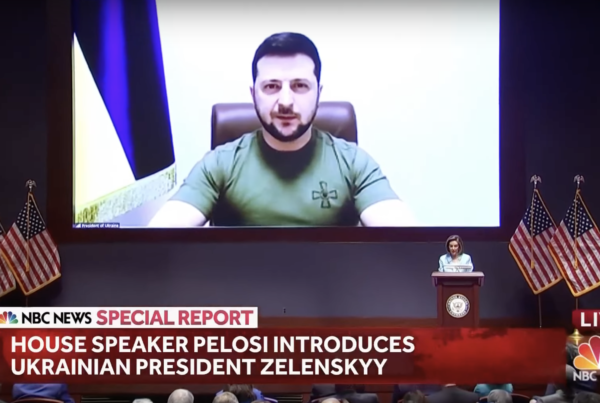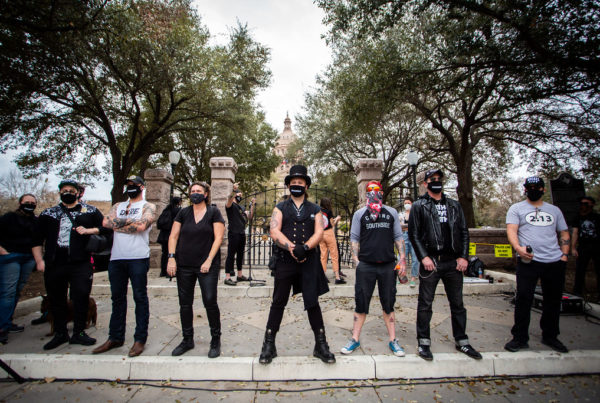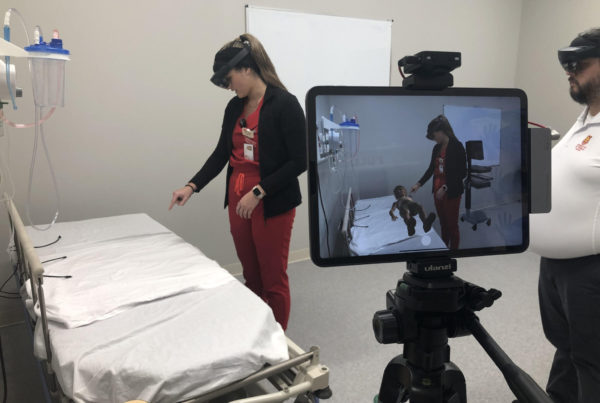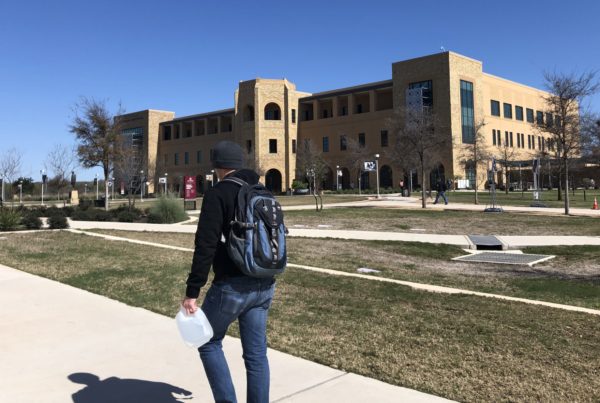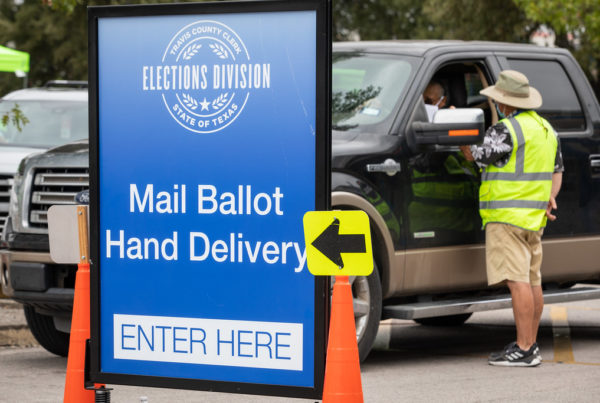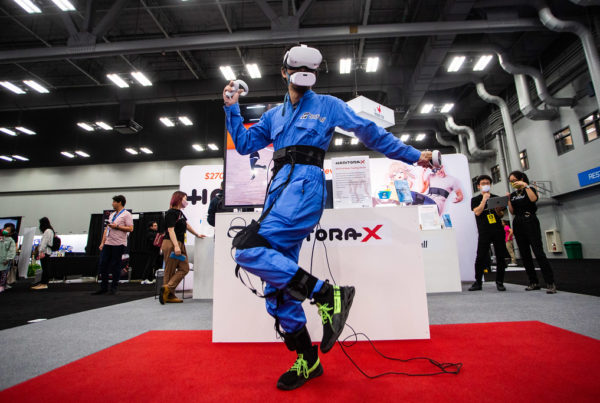The new book by Jonna Perrillo, “Educating the Enemy: teaching Nazis and Mexicans in the Cold War Borderlands examines” a little-known period of history. It was just after World War II and Nazi scientists, at the invitation of the U.S. government, relocated to El Paso with their families. The book compares the privileged educational experience of the German children of Nazi scientists to that of disadvantaged local Mexican-American students.
Perrillo, an education historian and associate professor of English at the University of Texas at El Paso talked to KTEP ‘s Angela Kocherga about her research and the book. Listen to the interview above or read the transcript below.
This transcript has been edited lightly for clarity:
Texas Standard: How did you got the idea for this book?
Jonna Perrillo: I saw a picture in a local history book of the children of German scientists at Crockett Elementary in 1946. And it didn’t say anything more than that. But I was fascinated. For one thing, I live blocks from Crockett, so it feels like really local history to me. But also even though I had heard about Operation Paperclip, as some people have. It hadn’t occurred to me that those scientists had families and that those families were part of the El Paso community.
What was Operation Paperclip?
Operation Paperclip was a military program designed by the War Department that brought several different groups of German scientists to the United States. And the group that I write about and really the most famous group were the V2 scientists, so the men who designed and created the V2 missile for the Third Reich. And they were sent to Fort Bliss. They were the largest group and the most well-known because their leader was Werner von Braun, who became sort of a popular culture icon once they went to develop NASA.
Many of these scientists sought out American military officers who were both wrapping up the war and starting the American occupation of Germany because they saw the writing on the wall. And they understood that they could either go to the United States or they could go to the Soviet Union, or they could stay in war-torn Germany, which was a really difficult place to live. So many of them sought out the military as much as we saw them out because they saw this as their best option.
And so they came with their families. And as you write, they were doing their research, but it was also an experiment of sorts bringing the children over. And they were put in public schools. So tell people about that what you learn from your research.
The families were incredibly important part of this operation, even though it was a little bit difficult sometimes to uncover information about them for a couple of different reasons. First, even though the operation was set up to be a temporary program at first, American military officers and diplomatic figures who were foundational to the operation saw that the scientists wouldn’t stay without their families. They weren’t going to leave them behind. So that was one very pragmatic factor.
But the other was that they realized pretty quickly that the children were the best face of the operation, and the operation was not without controversy, both in terms of recruiting these Nazi scientists and also at a time when the U.S. was not allowing German Jewish refugees in in any great numbers. So there was a real public relations problem.
There was also an issue of American scientists saying We can do this. We don’t necessarily need Nazi scientists to build weapons for us. So there were a lot of factors at play, but they had these children who were, with the exception of six out of the 144 children who came over, too young to have participated in Hitler Youth and really to have experienced much German schooling at all. So in some ways, they were the ideal public face. They were cute, they were charming and they seemed like, as one military officer said, the best way to civilize the families.
So the press and the military itself really leaned on the children to sort of change public opinion about the operation, and it was very successful.
But at the same time, you point out that public schools for local children, especially Mexican American children, were a very different experience and there was a real contrast there.
When I started researching for the book, I thought it was going to be a story about political anxiety and the idea of these children of Nazi scientists showing up in El Paso schools, many of which probably had very personal connections to the war in the war dead. I’m Crockett Elementary, at the same time that was being asked to take in these children had just built the stained glass window to commemorate its own casualties in the war.
But I saw fairly quickly that that wasn’t the case that regardless of how some individuals may have felt about the children, the press campaign was incredibly welcoming. And the things that I could find written by educators at the time reflected that they were seen as very well disciplined, very happy, very grateful, very eager to learn children. And that wasn’t the way that the Mexican American students who constituted the majority of the El Paso school population were seen at all. In fact, they were seen as antisocial, oftentimes as diffident, because they really wanted to speak Spanish, which was the only language that many the great majority of them came to school understanding, largely because of racial segregation in housing and other parts of the city’s economy. And so they were characterized as really un-American in a lot of ways our own American born student population. And so once I saw that, I saw that you really can’t understand either of these stories – the stories about the German children or the stories about Mexican American El Pasoans without understanding the other.
How hard was it to piece together this story? You had to find a lot on your own. How did you do that?
It was a challenge because as important as the children were to the operation, that doesn’t mean that they were documented or particularly even a subject of interest. There was a lot that was missing. And so I just reached out old school and sent out a bunch of letters.
I did have the original list, thanks to the New Mexico Museum of Space History, of all of the scientists and their children who came over. I had the list, so I had names. And I just found as many as I could online – easier for men than women who have often changed their names – and started sending out letters. And I was so gratified by the response I got. And by the generosity of the people who responded. They provided me with far more than interviews. They provided me with photographs, with old report cards, with old documents related to their status as children and as part of Operation Paperclip and just things that I know don’t exist in the archives. And I really couldn’t have written this book without that kind of participation.




